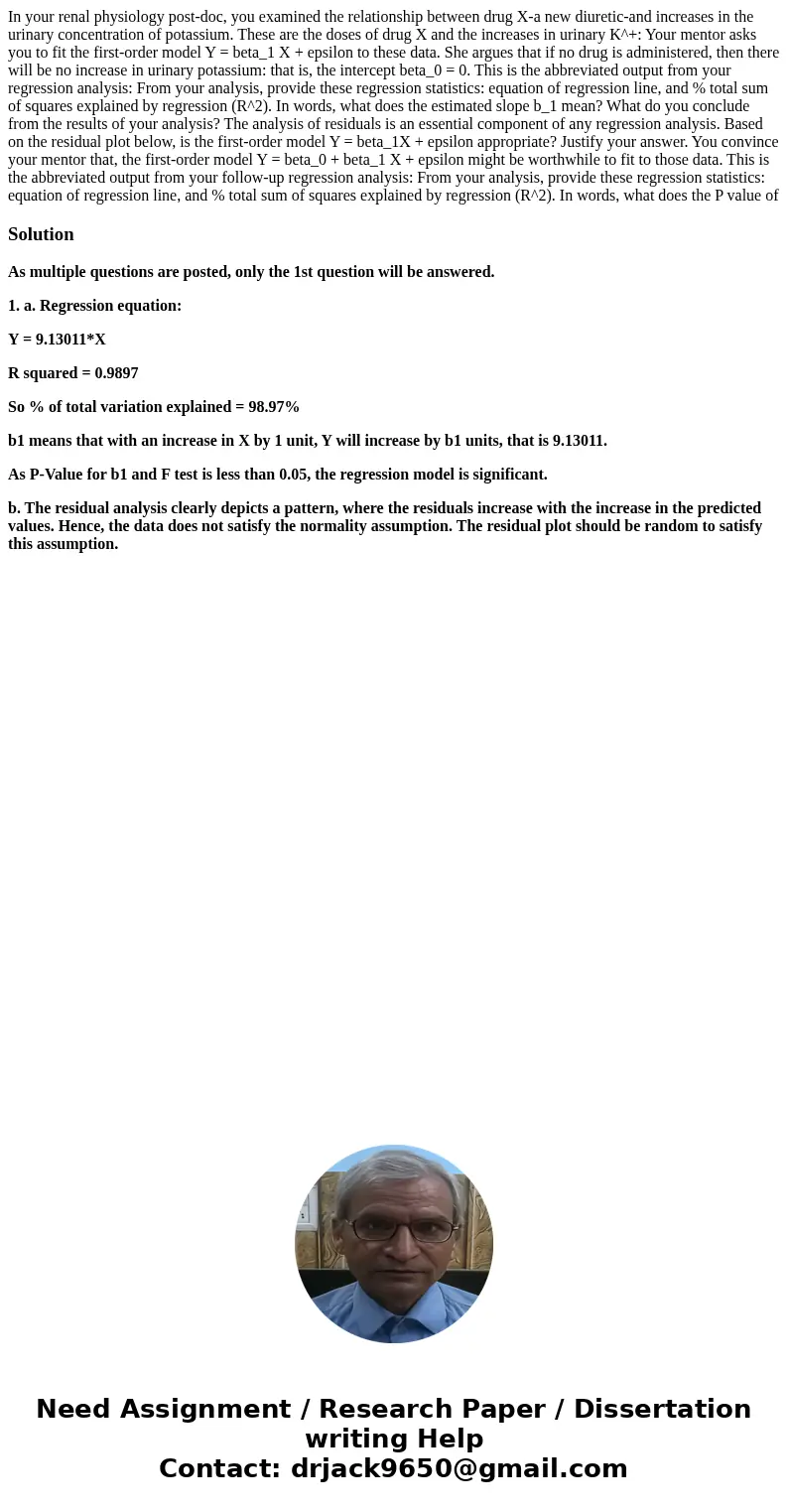In your renal physiology postdoc you examined the relationsh
In your renal physiology post-doc, you examined the relationship between drug X-a new diuretic-and increases in the urinary concentration of potassium. These are the doses of drug X and the increases in urinary K^+: Your mentor asks you to fit the first-order model Y = beta_1 X + epsilon to these data. She argues that if no drug is administered, then there will be no increase in urinary potassium: that is, the intercept beta_0 = 0. This is the abbreviated output from your regression analysis: From your analysis, provide these regression statistics: equation of regression line, and % total sum of squares explained by regression (R^2). In words, what does the estimated slope b_1 mean? What do you conclude from the results of your analysis? The analysis of residuals is an essential component of any regression analysis. Based on the residual plot below, is the first-order model Y = beta_1X + epsilon appropriate? Justify your answer. You convince your mentor that, the first-order model Y = beta_0 + beta_1 X + epsilon might be worthwhile to fit to those data. This is the abbreviated output from your follow-up regression analysis: From your analysis, provide these regression statistics: equation of regression line, and % total sum of squares explained by regression (R^2). In words, what does the P value of 
Solution
As multiple questions are posted, only the 1st question will be answered.
1. a. Regression equation:
Y = 9.13011*X
R squared = 0.9897
So % of total variation explained = 98.97%
b1 means that with an increase in X by 1 unit, Y will increase by b1 units, that is 9.13011.
As P-Value for b1 and F test is less than 0.05, the regression model is significant.
b. The residual analysis clearly depicts a pattern, where the residuals increase with the increase in the predicted values. Hence, the data does not satisfy the normality assumption. The residual plot should be random to satisfy this assumption.

 Homework Sourse
Homework Sourse